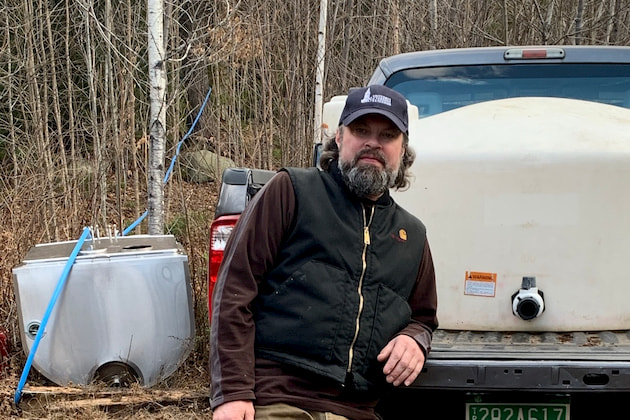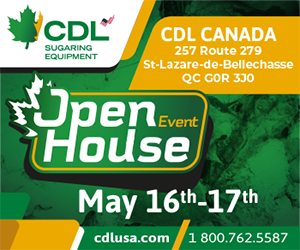Sap & Syrup
Showing some love for the sap-only producer
UVM study shows there’s profits in them thar trees without all the boiling
By PETER GREGG | JANUARY 19, 2021
WESTON, Vt.—There’s money to be made in selling sap and leaving the syrup making to someone else.
“There is opportunity in sap-only enterprises,” said Chris Lindgren of UVM Extension who led an online seminar last month on the pluses and minuses of collecting the sap and letting someone else boil it.
“Sap-only businesses are less risky and there are less barriers to entry,” he said. “Selling sap is the easiest and lowest cost way to get started in the maple business.”
Lindgren is a sap collector himself, with approximately 700 taps spread out across three bushes in Weston, Vt. in the center of the state.
He said producers looking to get into the sap selling game should budget an investment of approximately $30 per tap, which will cover costs of a collection system, vacuum pumps, a generator or two, monitoring systems, transportation, reverse osmosis and structures.
His calculations we based on research working with more than 50 maple businesses for a benchmark program.
That does not include the real estate. He encourages sugarmakers to find leasing opportunities, and they should expect to pay between 50 cents in most areas to as high as $3 per tap in competitive areas like Franklin County, Vt.
Lindgren and extension agents have developed a highly useful cost calculator website, he said.
https://www.uvm.edu/extension/agriculture/maple/bizmodules/node/7322
He said producers should expect high growth and high demand for sap-only enterprises since so many sugarmakers have invested in massive infrastructure to process sap to syrup.
“There is a lot of underutilized processing capacity out there,” he said.
Meanwhile, what to charge?
“There is no set price for sap,” Lindgren said. “You have to set your price to meet your needs.”
Most tie the price to the bulk syrup price, and then factor in the sweetness of the sap being sold.
“The higher the sugar the higher the value,” Lindgren said.
Cornell University's maple program has an online sap pricing guide that can be useful for setting prices.
https://blogs.cornell.edu/cornellmaple/buying-and-selling-sap/
“The idea here is the processor has excess capacity and he can increase his profits,” Lindgren said.
Delivery of quality sap takes ongoing work and investments, he said.
Finding the trees can be challenging for the start up sap-only producer. Start with looking at tree density in the woods for purchase or lease. 1-19 trees per acre is low and 40 + is high density.
Also check on the condition of the trees and the species. Are they Sugar maples or soft maples?
Then look at other critical logistics, he said.
How far do you have to haul your sap and how much competition is in the area?
UVM researchers found that sap-only enterprises tend to be more consistently profitable than integrated operations.
In UVM’s benchmark survey, 95 percent of sap only businesses indicated their businesses are sustainable.
“Sap business are more profitable than sap and syrup operations,” Lindgren said.
































